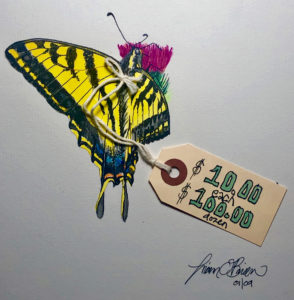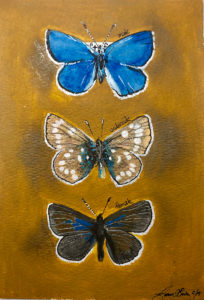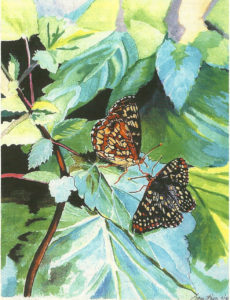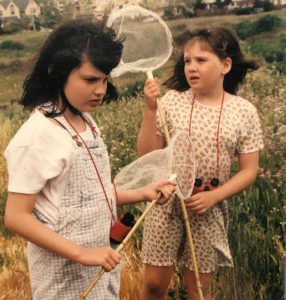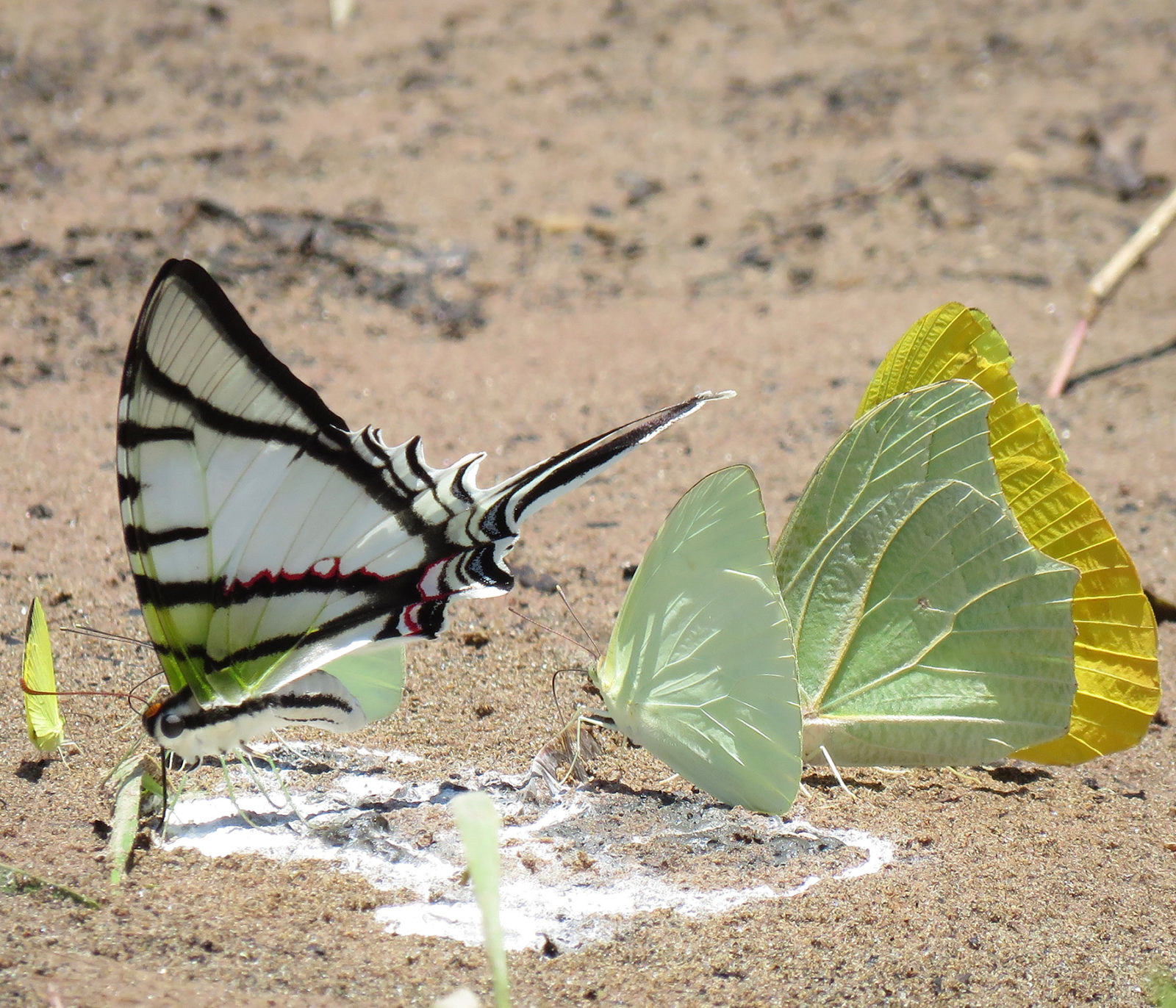
My theory: anytime an airplane door is unlocked and passengers disembark down a staircase onto a tarmac, an adventure will ensue. One of my favorite things about returning to Mexico is I immediately get to see huge, saucer-plate yellow and white sulphur butterflies blasting about the runway in the warm, Central American air.
This was my sixth trip here and this one was for Mazatlán’s first entry into the City Nature Challenge 2019. The challenge began four years back between Los Angeles and San Francisco for bragging rights for the city that within a four-day span, posts the most observations, species and observers of nature using the iNaturalist platform. Now in the fourth year of the event, it went national with a few other cities in the contest its second year, and slightly international the third year. When the wheels touched down in the state of Sinaloa this day, over 150 cities worldwide had signed up.
I’d been invited to Mazatlán by Francisco Farriols, his son Paco Jr., and Diego Barrales, the administrator of Paco’s Reserva de Flora y Fauna, to help them and others in the four-day bioblitz of the city. Francisco is the proud owner of the 75-acre reserve, and has built a beautiful home on it. I’d been there two years before. Francisco’s other son, Hernan, picked us up and we sped quickly onto a new toll freeway toward the beachy metropolis of Mazatlán. Tony Iwane, an employee from iNaturalist, came with me to document the challenge on video.
The city is a dichotomy even within a block: towering hotels, taller than anything I’ve ever seen in California, lined the beachside with small, single-storied shops and residences on the other side, rarely retreating from the shadows the tourist monoliths cast. The streets are owned by noisy great-tailed grackle birds, making surreal sounds. I saw my first Sinaloan crow on this ride, much smaller than ours in the United States. Pipevine and polydamas swallowtail butterflies popped like black, Christmas tree ornaments off the jungle of red and orange bougainvillea bracts. From our hotel room, I saw another first: a little blue heron patrolling the surf zone.
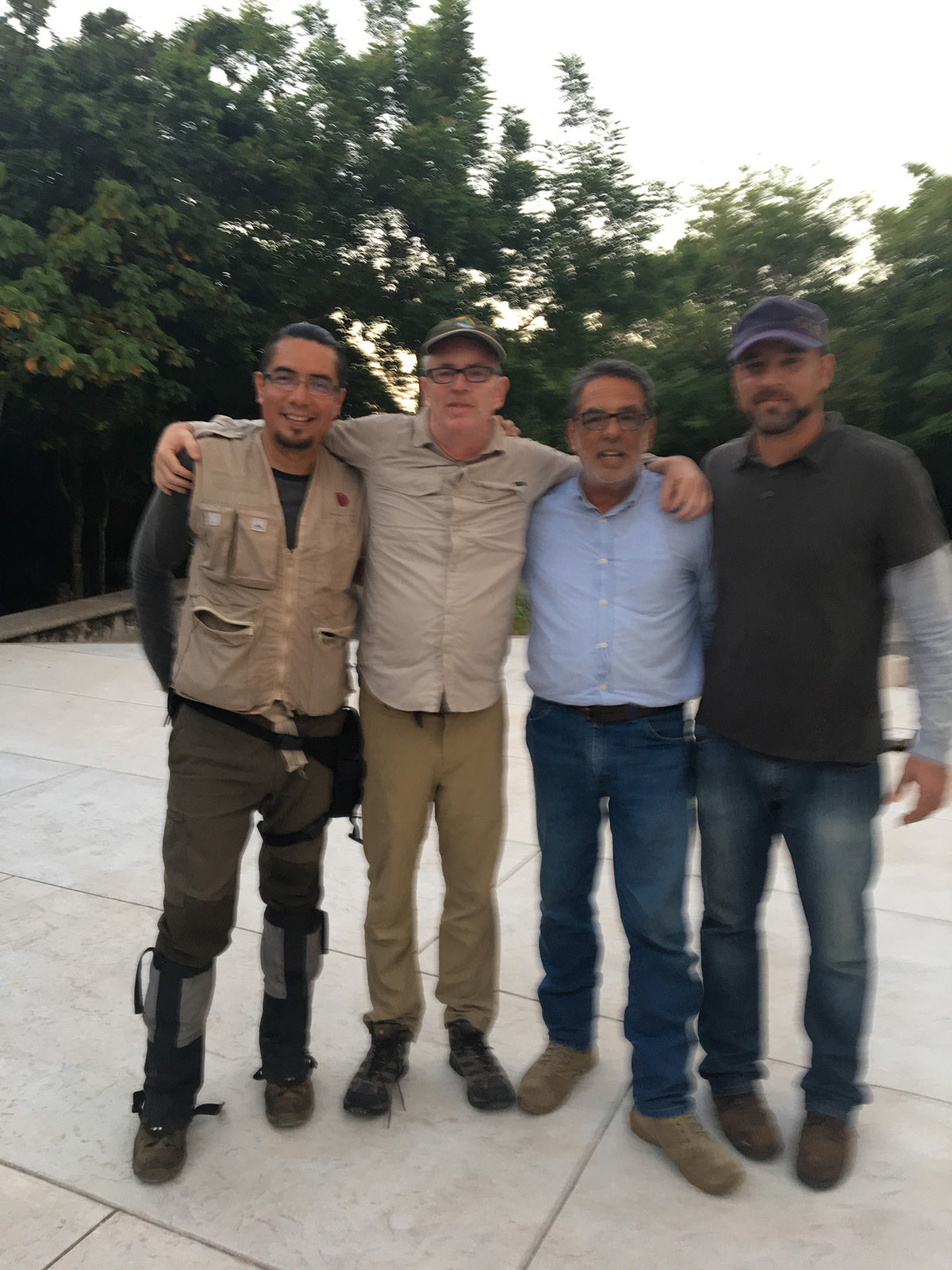
I joined iNaturalist six years ago. Told CNPS Executive Director Dan Gluesenkamp I wanted to learn my native host plants for butterflies more solidly. “Well, you know Liam,” he said, “there’s an app that can help you with that.” At the time of downloading it, I had no idea how much more this world of iNaturalist would become in my life. All these years later, I truly have iNat to thank for becoming a better, more-rounded naturalist, not just “The Butterfly Guy.” I look at everything now. Ultimately, it was the community, however, that I was most taken with. People on this network share a love of nature that I’m still enthralled by. (I always say I’m equally taken with our relationship to Nature as I am the butterflies themselves.) But they also share a real appreciation for other people, even naturalists (or naturalistas) in other parts of the world.
In those early years, I got invited everywhere: invited to Greg Lasley’s home in Dripping Springs, Texas, to look at dragonflies. I visited Mark Rosenstein in Boston to see my first Eastern butterflies. And of course Paco’s Reserve. Francisco and I had struck up a friendship over Mexican butterflies on iNaturalist online, and soon I found myself combing the Botanical Garden in Puerto Vallarta with he and his wife Lilliana. I remember magnificent swallowtails, Josephine whites and flasher skipper butterflies darting about the place, their cerulean wings “flashing” in the high heat of the day. When the City Nature Challenge rolled into town this year, I couldn’t wait to return.
It was clear from the second Hernan made the left onto the dirt road I would not be needing all the rain gear I’d hauled in my duffle bag here. I was startled at the way the lush, green jungle from my last trip had transformed into a lot of emaciated trees. The place was drier than a lick on a lint tray. A few great southern white male butterflies extracted minerals at the mud along the road, exploding like a ground cloud as we drove by, then dropping back to the same spot afterwards. I hugged Francisco — the most passionate naturalist I’ve ever met – as he whispered: “Did you bring the rain, my friend? My country needs a glass of water.”
Two hurricanes hung nearby (a weather phenomena Mazatlán counts on annually). One split to the north, the other south.
About 25 men and a few women stood around, all people I would come to know well over the next four days. “Hola, Señor Robberfly.” “Hola.” (Most folks go with their names as their handle on iNaturalist. I decide to pick something that … ate butterflies. Just to … butch up the whole butterfly thing. Robber flies, the family Asilidae, are wolf-like flies that snatch butterflies and other bugs out of the air and suck their innards out like vanilla shakes. I, however, slightly rue the day on that choice – now I’m inundated daily with robberfly ID questions.)
The next four days moved like a dance marathon. Sleep seemed like a brief rest before back up and at it. The method of survey? A pack of naturalists descending into an area after the bus door opened. Cameras blitzed all living things. The habitats seemed well thought-out in advance: a day along the tidepools where I saw new-to-me mollusks Chiton articulatus and Certhium maculosum. A day in a jungle produced a green iguana (which looked black). It reminded me of the biodiversity “blitzes” we have up in the Bay Area — lead by your curiosity of photographing and hearing in your brain as you hit the camera button: “Not sure what that is but someone on iNat will.”
I loved getting to know Juan Carlos Garcia Morales, the finest lepidopterist on iNat in Mexico. He’s ranked second on the eButterfly list for “most species seen” for all of North and Central America, and he told stories like a seasoned sailor each night at the moth lights. Watching him explain using the app in Spanish to a newbie reminded me of all the great teachers I’ve met through iNat.
Diego gave updates every morning at breakfast on Mazatlán’s status in the contest. The great majority of the folks were birders. I made points when I scored a yellow grosbeak and the others didn’t get it. One day we boated out to Isla Lobos, an island off the coast. Prickly-pears, Josephine white butterflies darting about. A white-nosed coati drinking from the only freshwater spring there. Mexico is a big place. Full of varied habitats and ancient culture, I thought to myself one day, “Hmmm, wonder if any other City Nature teams are walking past petroglyphs now?” It’s not just the diversity Mexico has to offer, it’s the abundance as well: a total of 1,750 species of butterflies and dragonflies known from there. And still growing.
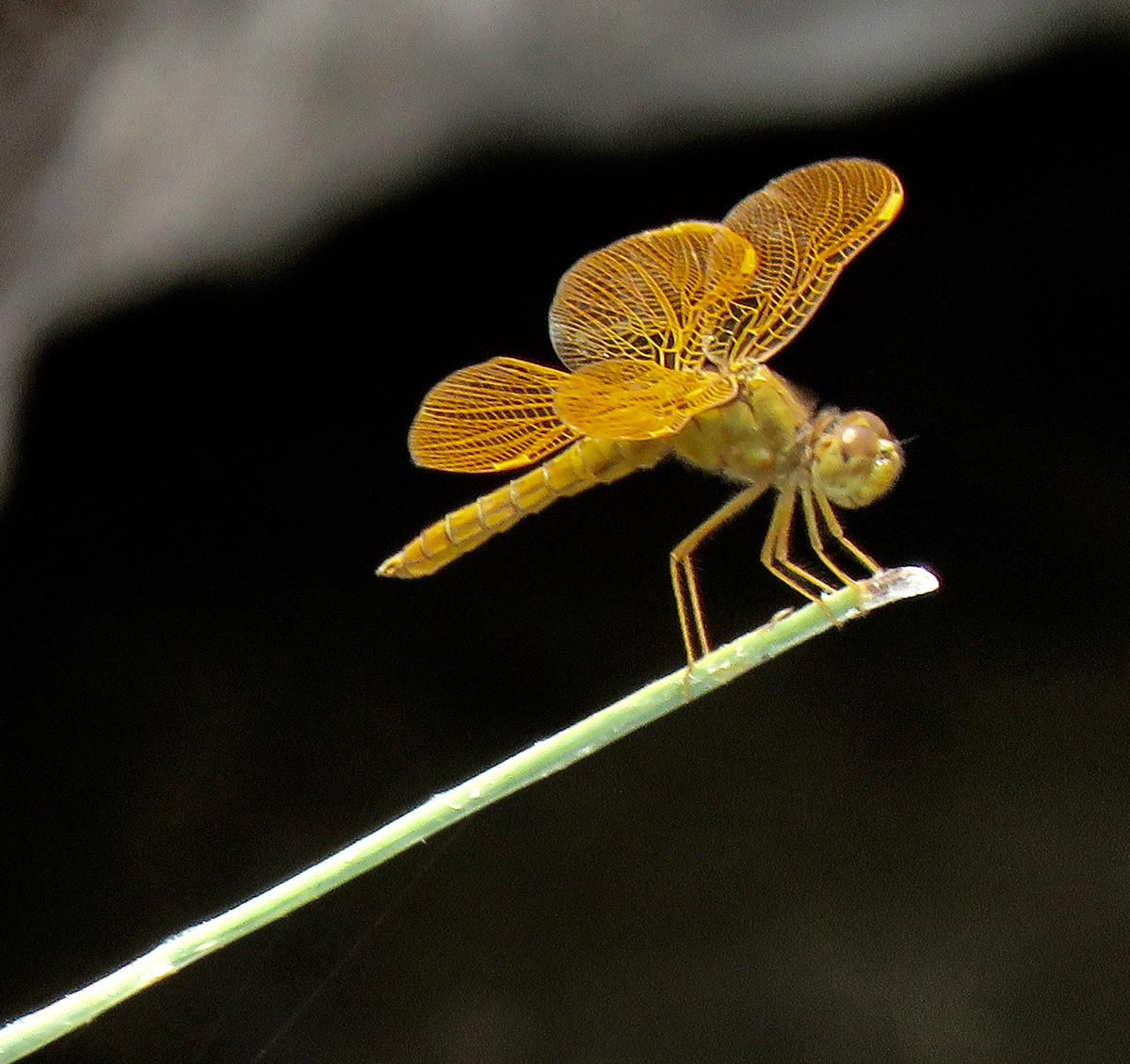
We took shaky speedboats down the Rio Presidio into a glorious estuary. The wading birds were abundant — my first wood storks and little blue herons. We pulled up next to a father and son hauling in their fishing lines — cameras clicking away like a flourish of paparazzi at a starlet passing by. Felt strange.
On the last day, Diego scored a beaded lizard (Heloderma horridum), one of only two known poisonous lizards in the world. The other is the Gila monster (same genus). Cheers rang out, lots of high-fives, as at made its way through the leaf litter of Paco’s Reserve — the actual mascot of the place. Magnificent reptile.
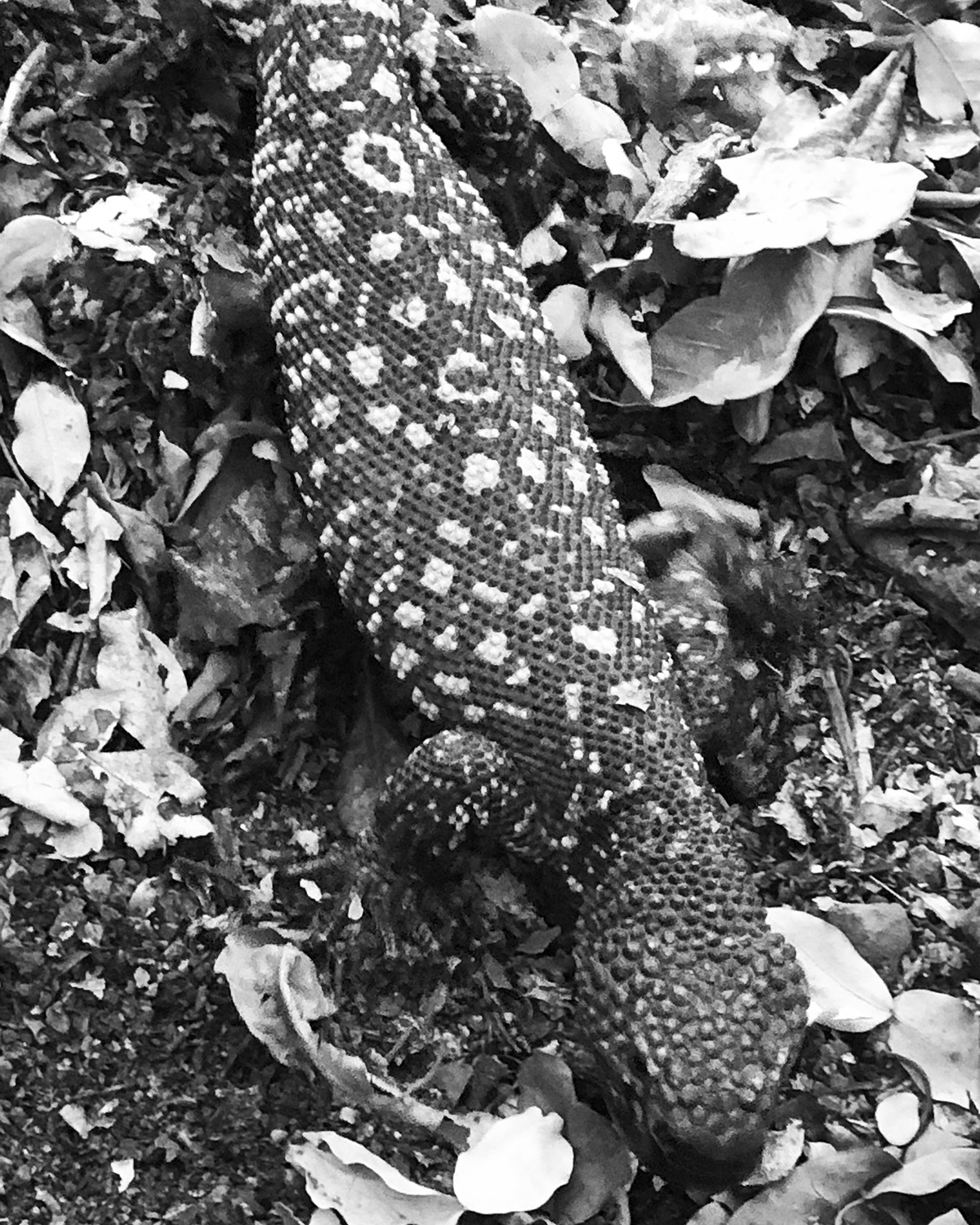
Final stats from Mazatlán: 27,684 observations (12th out of 158 cities worldwide), 2,500 species (11th), 511 observers (20th). It was an honor and a privilege to walk with these iNaturalistas. We had the common language of iNaturalist and the even more common language of curiosity.
A few days after coming home, I heard again from Juan Carlos Garcia Morales:
“My dear friend. I’m very sorry ’cause I couldn’t answer before. My emotions after Mazatlan’s experience are still mixed. It was a great experience, a unique one. Meeting with all you guys.
Wonderful people who I’ve admired for so long. Hard to describe with simple word. Mexico and whole planet facing challenges. I can see a huge, economic crisis heading our way. The battle for justice and for the Earth here in Mexico, many times has been a senseless one. Many efforts from thousands of people, many of them unknown, have ended with the loss of their lives. That’s terrible.
I think the biggest problem is the insecure way of life here in Mexico. Lots of people, young people, are kidnapped every single day. Many of us have no jobs at all. Families have been destroyed in the last three decades. I have hope but not sure what will happen with this incredible nation. Anyway, days in Mazatlan were in many senses pieces of joy.
I hope things get much better and life gives us a chance to meet again.
Un abrazo ( a hug ) Juan Carlos

